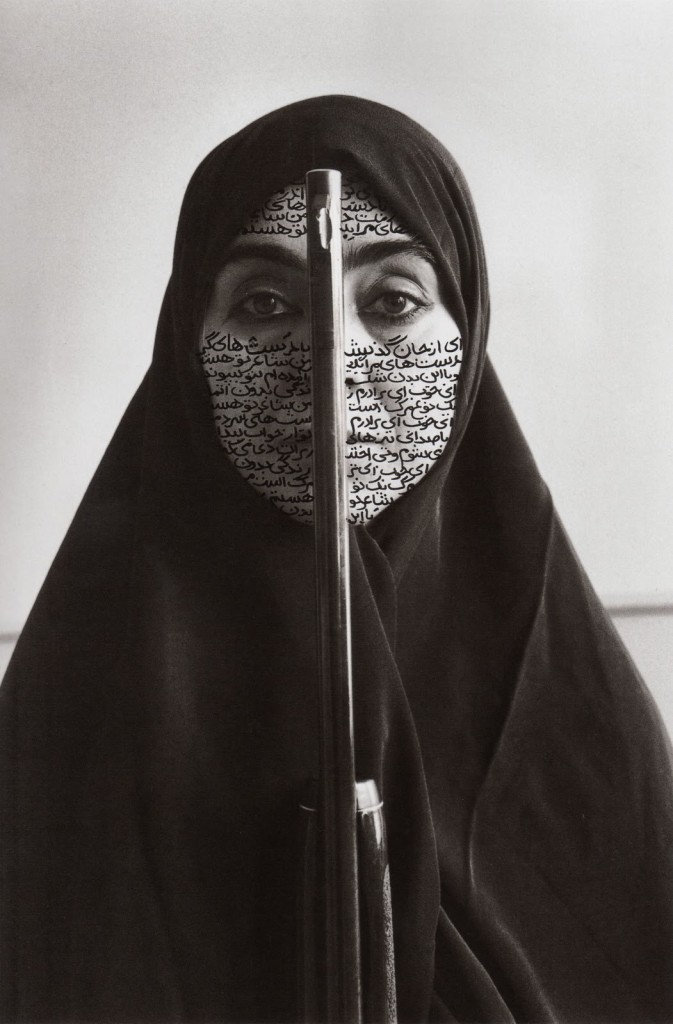Our group (Leon, Wilson and James) was tasked to do research on the artist named Shirin Neshat.
- Born in 1957, fourth of five children of westernised, wealthy parents.
- Learnt traditional religious values from maternal grandparents.
- Attained Bachelor of Arts, Master of Arts and Master of Fine Arts.
- Visual feminist artist exploring gender issues in the Islamic world; addresses gender issues through her artwork.
“I am an artist, I am not an activist” – Shirin Neshat
The artwork that we’ll be looking at today is a group of 4 photos titled, “Women of Allah”
- An artistic result of her visit to Iran in 1990, a country transformed by Islamic fundamentalism.
- Wanted to explore the notion of femininity in relation to male authority and Islamic fundamentalism in her home country.
- She feels that photography works best for her topics, conveying realism, immediacy, and a sense of drama.
Even though she was traditionally trained as a painter, she was inspired by the realism of photojournalism. She crops and enlarges photos in a large format, and considers herself more of a director than a photographer.
The veil is used as a common representative symbol. Rejection of veil under Shah’s promotion of secular culture. Symbol of religious faith & political rebellion under Islamic Revolution.
“Women of Allah” also showcases women’s bodies, which is a sensitive subject matter encompassing religion, spirituality, moralism and gender equality. She intentionally shows some parts of female body that are not allowed to be seen in public, which are covered with abstract designs and Persian calligraphy; infusion of Middle Eastern culture. Brings worth the themes of roles of women, gender rights, equality and dress code.
A common object featured in these photos is a gun, which is a symbol of cruelty and violence. She creates a contradiction by putting feminine traits such as beauty and grace, with cruelty and violence.
On a micro scale, “Women of Allah” is a personal series where she explore her cultural roots and heritage, showing the transition from the Shah monarchy to the Islamic Revolution. On a macro scale, she shows an experience of living in the west and their cultural norms. She also investigates women’s identity across two cultures and regions.
“I believe we don’t need to widen the divide between the West and Islam. Rather, we need to build dialogue to encourage tolerance and respect.” – Shirin Neshat
Done by: Leon Tai, Wilson Heng and James Ng
Resources:
http://quod.lib.umich.edu/cgi/t/text/text-idx?cc=mqr;c=mqr;c=mqrarchive;idno=act2080.0038.207;rgn=main;view=text;xc=1;g=mqrg
https://teachartwiki.wikispaces.com/Shirin+Neshat,+Women+of+Allah+Series
http://s.newsweek.com/sites/www.newsweek.com/files/styles/headline/public/2014/01/30/shirin-neshat.jpg
http://c300221.r21.cf1.rackcdn.com/shirin-neshat-untitled-from-women-of-allah-1994-gelatin-silver-print-1368933061_org.jpg
http://4.bp.blogspot.com/-GOUTpszaVx4/T4OB5bSrAXI/AAAAAAAAAW0/p4_lFR77lH8/s1600/neshat2.jpg
http://www.matthewmachowski.com/2009/10/women-of-allah.html
http://eleven.soussaline.com/wp-content/uploads/2011/10/women-of-allah-shirin-neshat-05.jpg
https://teachartwiki.wikispaces.com/file/view/s2.jpg/451905320/400×508/s2.jpg





You must be logged in to post a comment.